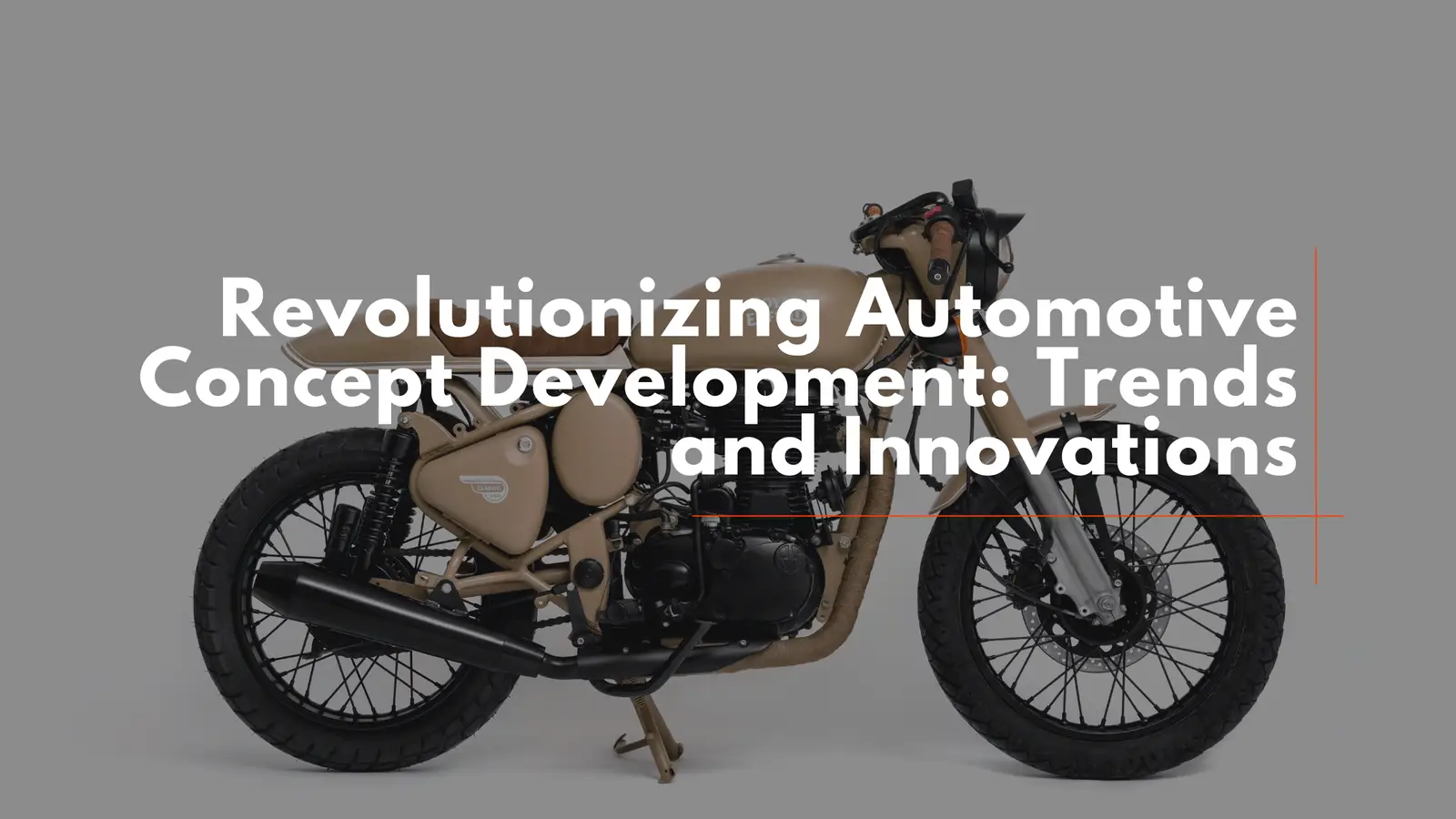Automotive concept development is crucial for the advancement of the automotive industry. It is the phase where concepts are turned into practical and creative designs, laying the groundwork for future vehicles. This procedure encompasses multiple phases, starting from initial idea generation to thorough engineering and prototyping, all of which play a part in producing a vehicle that satisfies market needs and complies with regulations. Over the past few years, a number of new trends and advancements have surfaced, transforming the approach to automotive concept development. This article explores these trends and their influence on the industry.
Sustainable Design and Development
1. Eco-friendly Materials
The importance of sustainability is growing in the development of automotive concepts. in automotive concept development. Designers are increasingly exploring eco-friendly materials, such as recycled plastics, natural fibers, and biodegradable composites. These materials reduce the environmental impact of vehicles and align with consumer preferences for sustainable products. The challenge lies in ensuring that these materials meet the stringent safety and performance standards required in the automotive industry.
2. Lightweight Construction
Enhancing fuel efficiency and decreasing emissions heavily rely on minimizing the weight of vehicles. Innovations in lightweight construction materials, such as advanced high-strength steels, aluminum alloys, and carbon fiber composites, are enabling automakers to achieve these goals. These materials offer high strength-to-weight ratios, enhancing vehicle performance without compromising safety.

3. Electric and Hybrid Powertrains
The shift towards electric and hybrid powertrains is a significant trend in automotive concept development. As governments worldwide implement stricter emissions regulations, automakers are investing heavily in the development of electric and hybrid vehicles. This shift requires rethinking vehicle architecture, including battery placement, weight distribution, and thermal management, to optimize performance and range.
Collaborative Design and Development
1. Open Innovation
The concept of open innovation is gaining traction in the automotive industry. Automakers are increasingly collaborating with technology companies, startups, and academic institutions to leverage external expertise and accelerate innovation. This collaborative approach fosters the exchange of ideas and technologies, leading to more innovative and competitive vehicle designs.
2. Crowdsourcing
Crowdsourcing is another innovative approach to automotive concept development. By tapping into the collective intelligence of a global community, automakers can gather diverse perspectives and ideas. Crowdsourcing can be used for various aspects of concept development, from initial design sketches to solving specific engineering challenges. This approach not only enhances creativity but also engages consumers, making them feel a part of the development process.
3. Agile Development
Agile development methodologies, traditionally used in software development, are being adapted for automotive concept development. Agile emphasizes iterative development, rapid prototyping, and cross-functional collaboration. This approach allows for more flexibility and responsiveness to changes, enabling teams to quickly adapt to new requirements or market trends. Agile development can significantly reduce time-to-market and improve the overall quality of the final product.
The Role of Technology in Concept Development
1. Digital Twin Technology
One of the most transformative innovations in automotive concept development is the use of digital twin technology. A digital twin represents a computerized version of a tangible item, operation, or structure. In automotive design, it allows engineers and designers to simulate and analyze a vehicle’s performance in a virtual environment before physical prototypes are built. This technology enhances precision, reduces development time, and minimizes costs by identifying potential issues early in the design process.
2. Virtual Reality (VR) and Augmented Reality (AR)
VR and AR are becoming integral tools in automotive concept development. VR enables designers to immerse themselves in a 3D environment, providing a realistic sense of scale and space. This immersive experience facilitates better design decisions and enhances collaboration among teams. AR, on the other hand, allows for overlaying digital information onto the physical world, which can be used for tasks like visualizing how different design elements fit together or for providing real-time feedback during prototype testing.
3. Artificial Intelligence (AI) and Machine Learning
AI and machine learning are driving significant advancements in automotive concept development. These technologies are used for predictive analysis, optimizing design processes, and automating repetitive tasks. AI algorithms can analyze vast amounts of data to identify patterns and trends, enabling designers to make data-driven decisions. For instance, AI can predict how changes in design will impact vehicle performance, safety, and manufacturing costs.
Conclusion
The landscape of automotive concept development is undergoing a significant transformation driven by technological advancements, sustainability concerns, and evolving consumer expectations. Digital twin technology, VR/AR, AI, and machine learning are revolutionizing the design and development process, enabling more precise and efficient workflows. Sustainable materials, lightweight construction, and electric powertrains are shaping the future of vehicle design, aligning with global efforts to reduce environmental impact.
As the automotive industry continues to evolve, embracing these trends and innovations in concept development will be crucial for automakers to stay ahead of the curve and meet the demands of a rapidly changing market. The future of automotive design promises to be more exciting, sustainable, and user-friendly than ever before.
